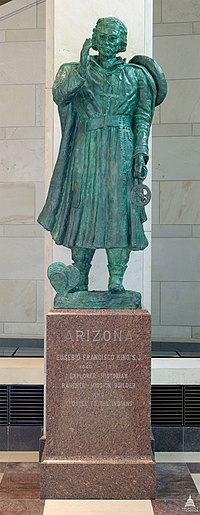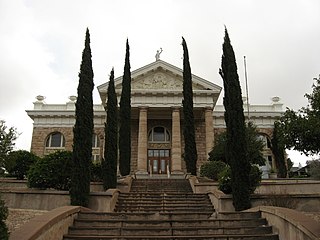
Santa Cruz is a county in southern Arizona, United States. As of the 2020 census, the population is 47,669. The county seat is Nogales. The county was established in 1899. It borders Pima County to the north and west, Cochise County to the east, and the Mexican state of Sonora to the south.
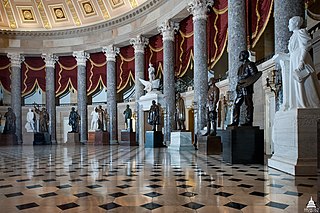
The National Statuary Hall is a chamber in the United States Capitol devoted to sculptures of prominent Americans. The hall, also known as the Old Hall of the House, is a large, two-story, semicircular room with a second story gallery along the curved perimeter. It is located immediately south of the Rotunda. The meeting place of the U.S. House of Representatives for nearly 50 years (1807–1857), after a few years of disuse in 1864 it was repurposed as a statuary hall; this is when the National Statuary Hall Collection was established. By 1933, the collection had outgrown this single room, and a number of statues are placed elsewhere within the Capitol.

The National Statuary Hall Collection in the United States Capitol is composed of statues donated by individual states to honor persons notable in their history. Limited to two statues per state, the collection was originally set up in the old Hall of the House of Representatives, which was then renamed National Statuary Hall. The expanding collection has since been spread throughout the Capitol and its Visitor's Center.
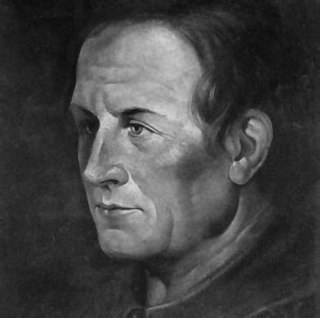
Eusebio Francisco Kino, often referred to as Father Kino, was a Tyrolean Jesuit, missionary, geographer, explorer, cartographer and astronomer born in the Territory of the Bishopric of Trent, then part of the Holy Roman Empire. For the last 24 years of his life he worked in the region then known as the Pimería Alta, modern-day Sonora in Mexico and southern Arizona in the United States. He explored the region and worked with the indigenous Native American population, including primarily the Tohono O'Odham, Sobaipuri and other Upper Piman groups. He proved that the Baja California Territory was not an island but a peninsula by leading an overland expedition there. By the time of his death he had established 24 missions and visitas.

Kino Sports Complex is a multiple-use sports complex in Tucson, Arizona. The Arizona Diamondbacks and Chicago White Sox formerly utilized the complex's main ballpark, Kino Veterans Memorial Stadium, for Cactus League games each March and had their minor league complexes on-site. The ballpark was also home to the Tucson Sidewinders of the Pacific Coast League for the team's last decade in Tucson, running from the stadium's 1998 opening season to the 2008 season. The ballpark was a temporary home (2011–2013) to the Tucson Padres of the Pacific Coast League during the team's relocation to El Paso, Texas. It was also the regular season home of the Pecos League's Tucson Saguaros baseball team from 2016 to 2017. It seats 11,500 fans, and hosts concerts in addition to its primary function as a baseball park.

The Spanish missions in the Sonoran Desert are a series of Jesuit Catholic religious outposts established by the Spanish Catholic Jesuits and other orders for religious conversions of the Pima and Tohono O'odham indigenous peoples residing in the Sonoran Desert. An added goal was giving Spain a colonial presence in their frontier territory of the Sonora y Sinaloa Province in the Viceroyalty of New Spain, and relocating by Indian Reductions settlements and encomiendas for agricultural, ranching, and mining labor.

Beginning in the 16th century Spain established missions throughout New Spain in order to facilitate colonization of these lands.
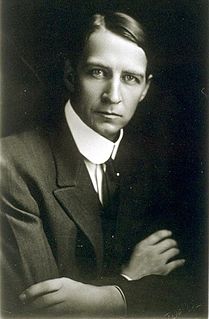
Herbert Eugene Bolton was an American historian who pioneered the study of the Spanish-American borderlands and was a prominent authority on Spanish American history. He originated what became known as the Bolton Theory of the history of the Americas which holds that it is impossible to study the history of the United States in isolation from the histories of other American nations, and wrote or co-authored ninety-four works. A student of Frederick Jackson Turner, Bolton disagreed with his mentor's Frontier theory and argued that the history of the Americas is best understood by taking a holistic view and trying to understand the ways in which the different colonial and precolonial contexts have interacted to produce the modern United States. The height of his career was spent at the University of California, Berkeley where he served as chair of the history department for twenty-two years and is widely credited with making the renowned Bancroft Library the preeminent research center it is today.
Mission San Bruno was a short-lived Spanish mission established by Jesuit order on October 7, 1684 in what is now the Loreto Municipality of Baja California Sur, Mexico. The mission was the first Spanish mission established on the Baja California Peninsula.

Magdalena de Kino is a city, part of the surrounding municipality of the same name, located in the Mexican state of Sonora covering approximately 560 square miles. According to the 2005 census, the city's population was 23,101, and the municipality's population was 25,500. Magdalena de Kino is in the northern section of Sonora 50 miles from the Mexico-U.S. border. To the north the municipality abuts Nogales; to the south, the municipality of Santa Ana; to the east, Ímuris and Cucurpe; and to the west, the municipalities of Tubutama and Sáric. Its main sectors include San Ignacio, San Isidro, Tacicuri, and Sásabe. The city was named after the pioneer Roman Catholic missionary and explorer, Father Eusebio Francisco Kino, who worked in the area, as well as in the present-day US state of Arizona.

The Hall of Columns is a more than 100-foot-long (30 m) hallway lined with 28 fluted columns in the south wing extension of the United States Capitol in Washington, D.C. It is also the gallery for 18 statues of the National Statuary Hall Collection.

The Huachuca Mountains are part of the Sierra Vista Ranger District of the Coronado National Forest in Cochise County in southeastern Arizona, approximately 70 miles (110 km) south-southeast of Tucson and southwest of the city of Sierra Vista. Included in this area is the highest peak in the Huachucas, Miller Peak, and the region of the Huachucas known as Canelo Hills in eastern Santa Cruz County. The mountains range in elevation from 3,934 feet (1,199 m) at the base to 9,466 feet (2,885 m) at the top of Miller Peak. The second highest peak in this range is Carr Peak, elevation 9,200 feet (2,804 m). The Huachuca Mountain area is managed principally by the United States Forest Service (41%) and the U.S. Army (20%), with much of the rest being private land (32%). Sierra Vista is the main population center.
The history of Tucson, Arizona began thousands of years ago. Paleo-Indians practiced plant husbandry and hunted game in the Santa Cruz River Valley from 10,000 or earlier BCE. Archaic peoples began making irrigation canals, some of the first in North America, around 1,200 BCE. The Hohokam people lived in the Tucson area from around 450–1450 CE in a complex agricultural society.
Ernest Joseph Burrus (1907–1991) was a Jesuit and a leading historian of northwestern New Spain, particularly the Baja California peninsula and Sonora. He made notable contributions in editing many accounts of the Jesuit period in documents from European archives.
Ak Komelik is a populated place located in Pima County, Arizona. It is a village in the area of the Baboquivari Peak Wilderness in the Papago Indian Reservation. The name means "flats" in the Papago language. The Jesuit missionary Eusebio Kino is believed to have visited the village in 1698 and called it "Cubit Tubig". It has an estimated elevation of 2,034 feet (620 m) above sea level.

Baroness Suzanne Silvercruys was a Belgian-American sculptor and political activist, founder and first president of the Minute Women of the U.S.A.

The National Statuary Hall Collection holds statues donated by each of the United States, portraying notable persons in the histories of the respective states. Displayed in the National Statuary Hall and other parts of the United States Capitol in Washington, D.C., the collection includes two statues from each state, except for Virginia which currently has one, making a total of 99.

John Campbell Greenway is a 1930 bronze statue of John Campbell Greenway by Gutzon Borglum, one version of which was installed in the United States Capitol, in Washington D.C., as part of the National Statuary Hall Collection. It was one of two statues donated by the state of Arizona. The sculpture was unveiled by Senator Henry Ashurst of Arizona on May 24, 1930.
Between the years of 1539 and 1821, the Spanish Empire explored, colonized, and ruled over what is the state of Arizona in the United States.
